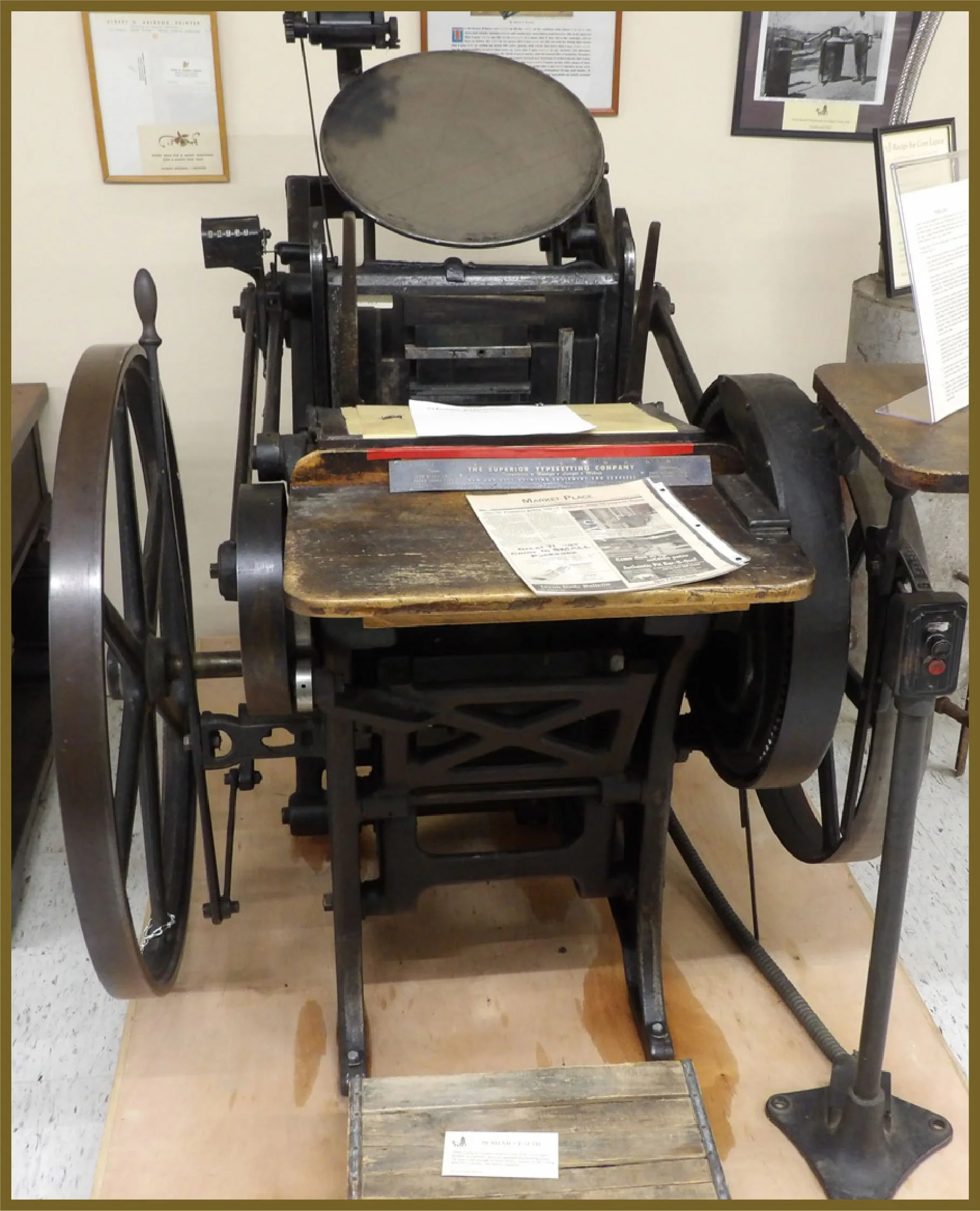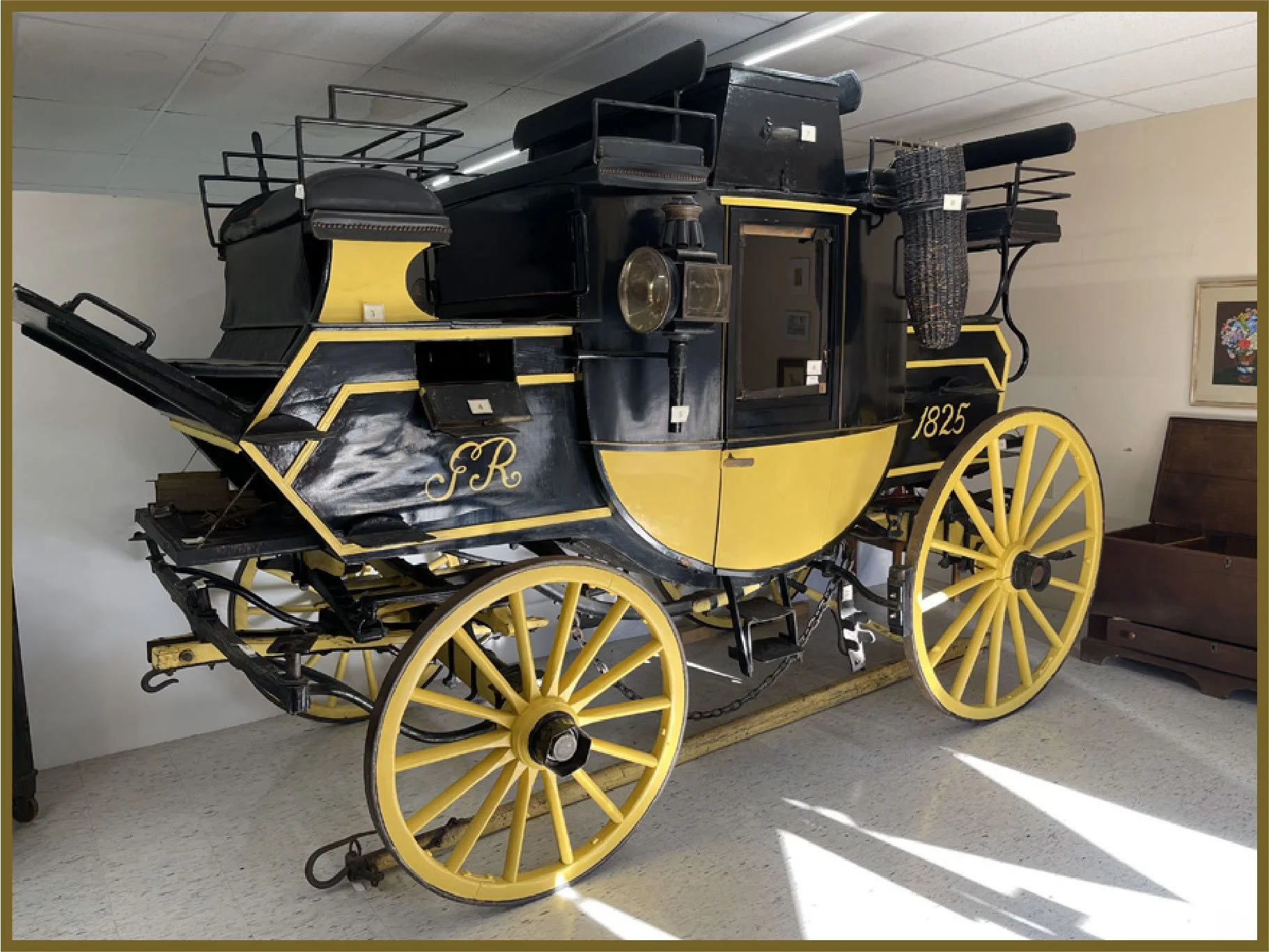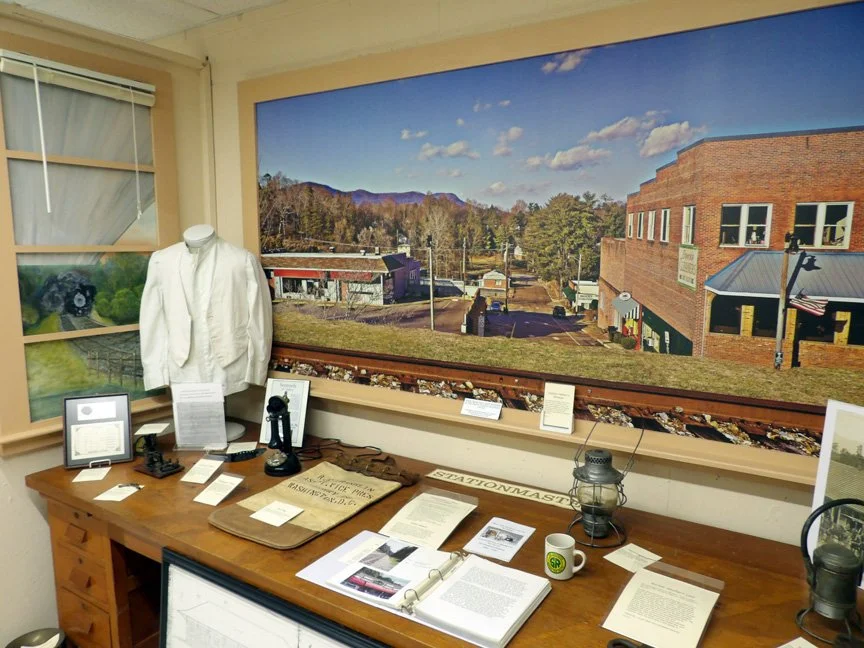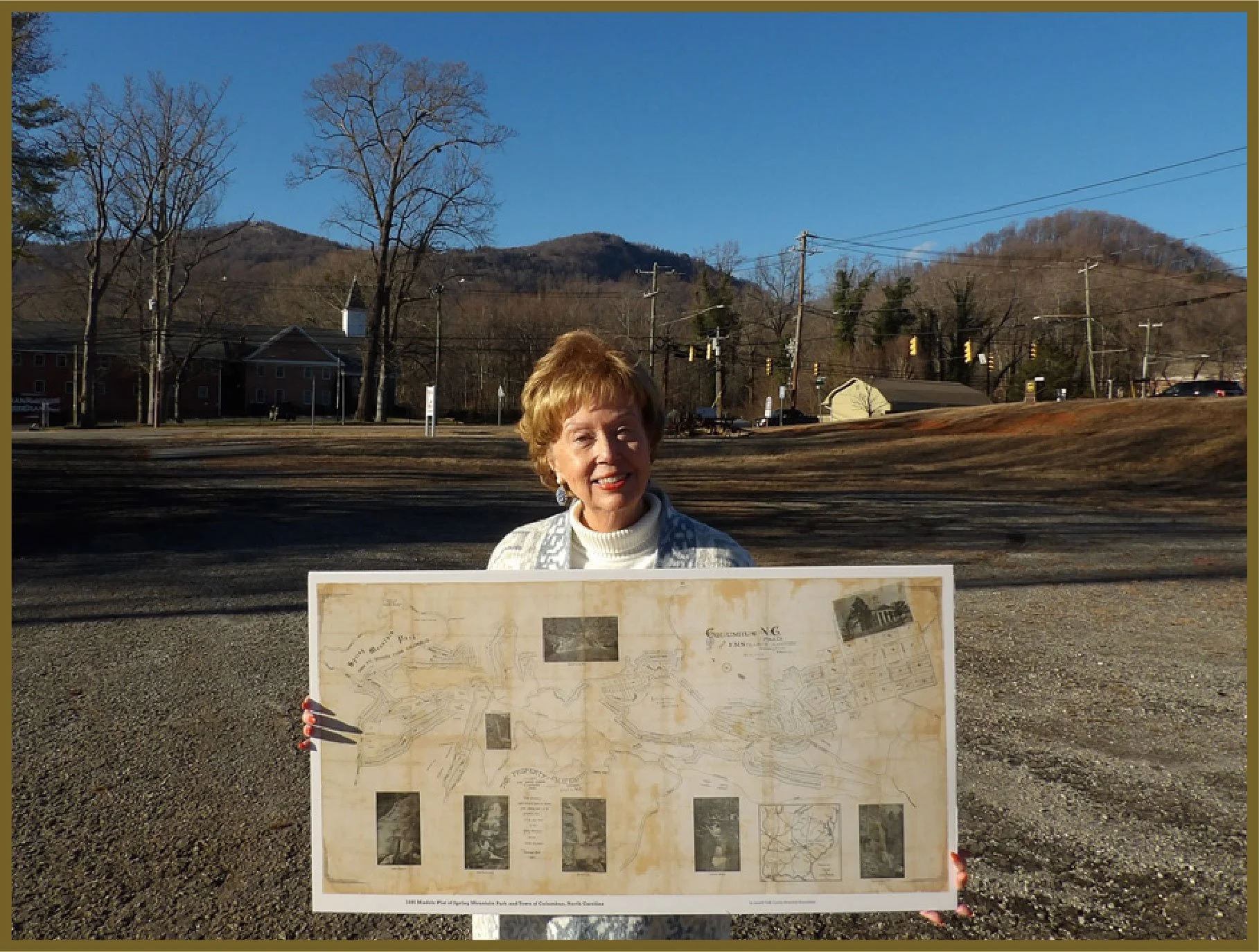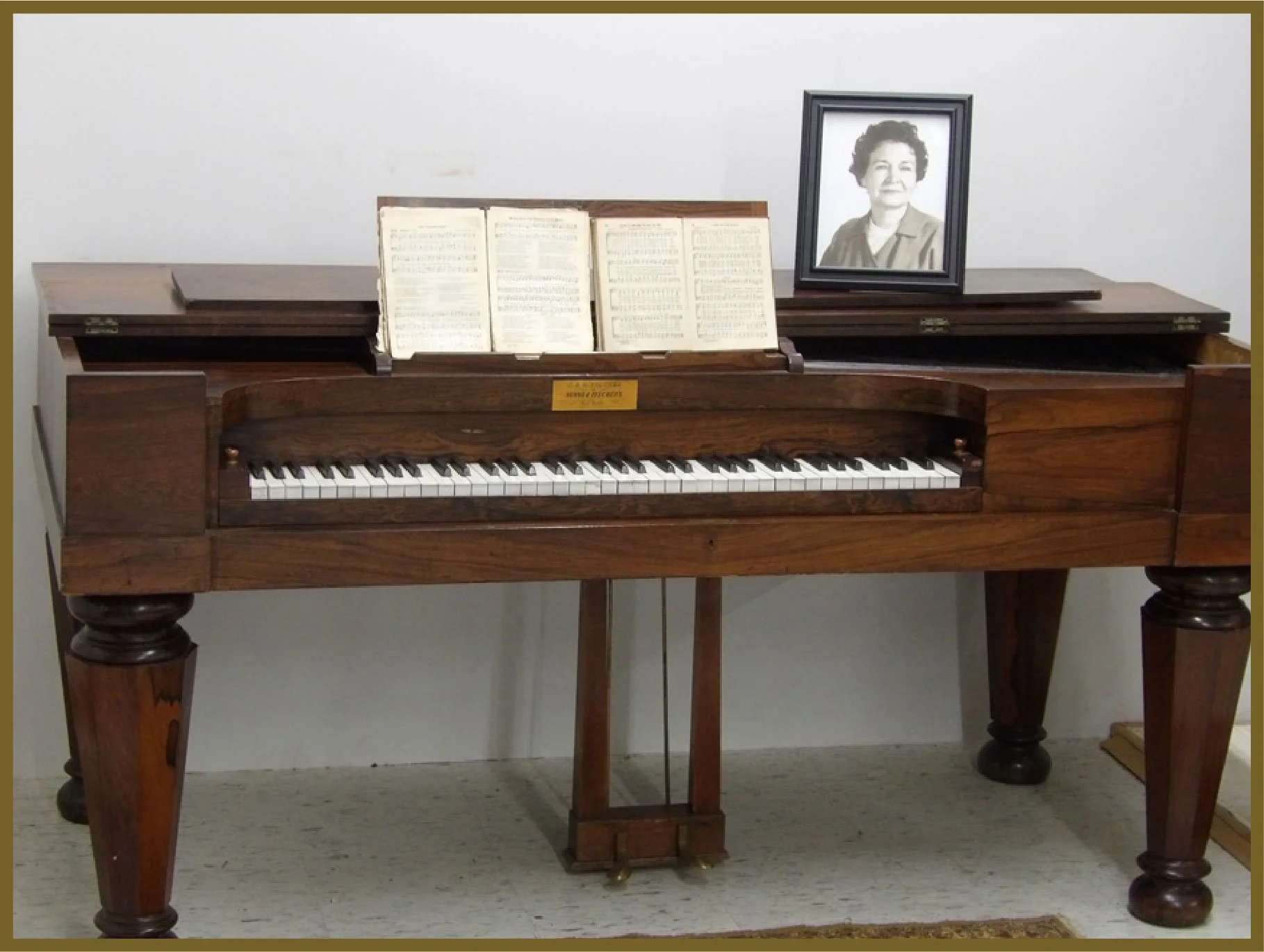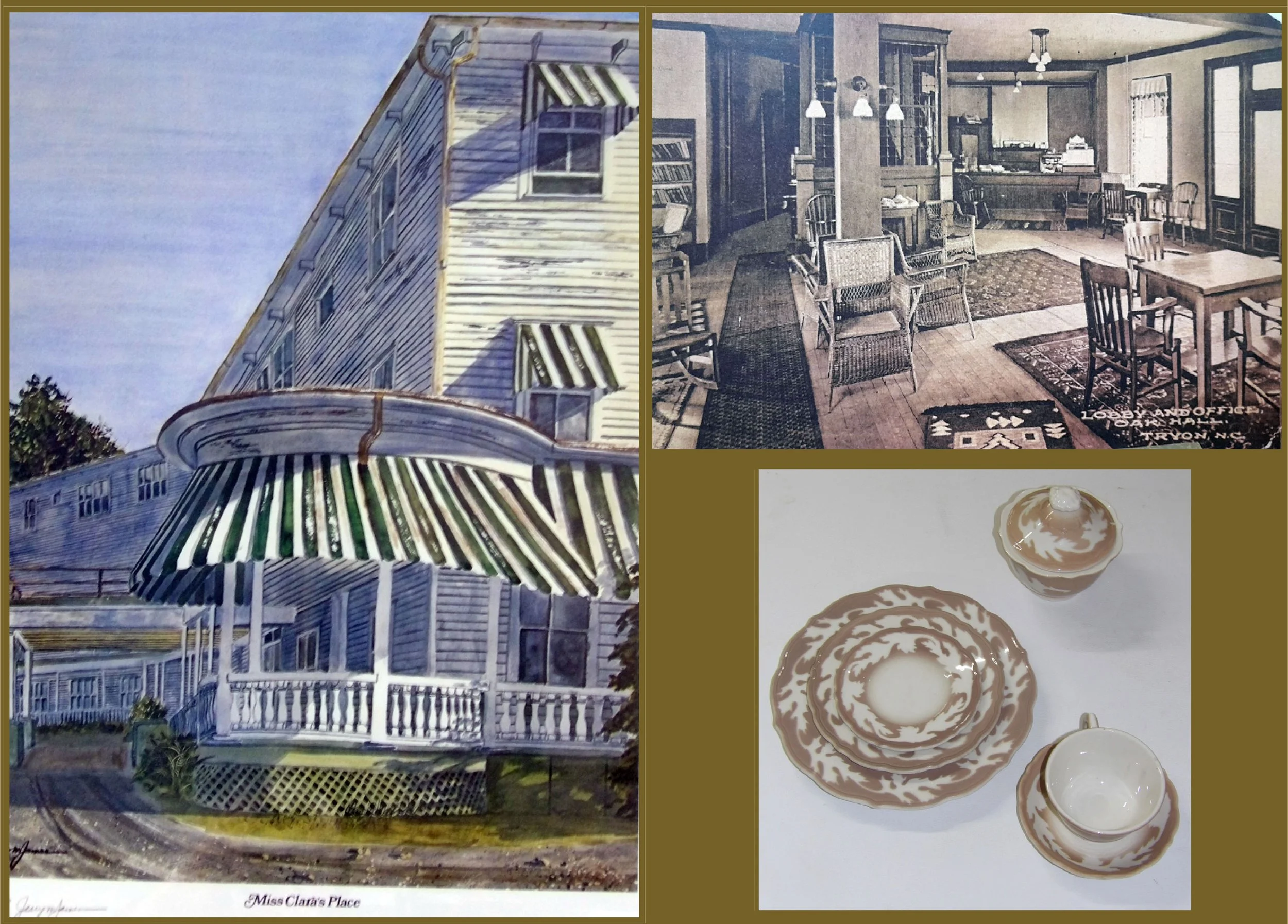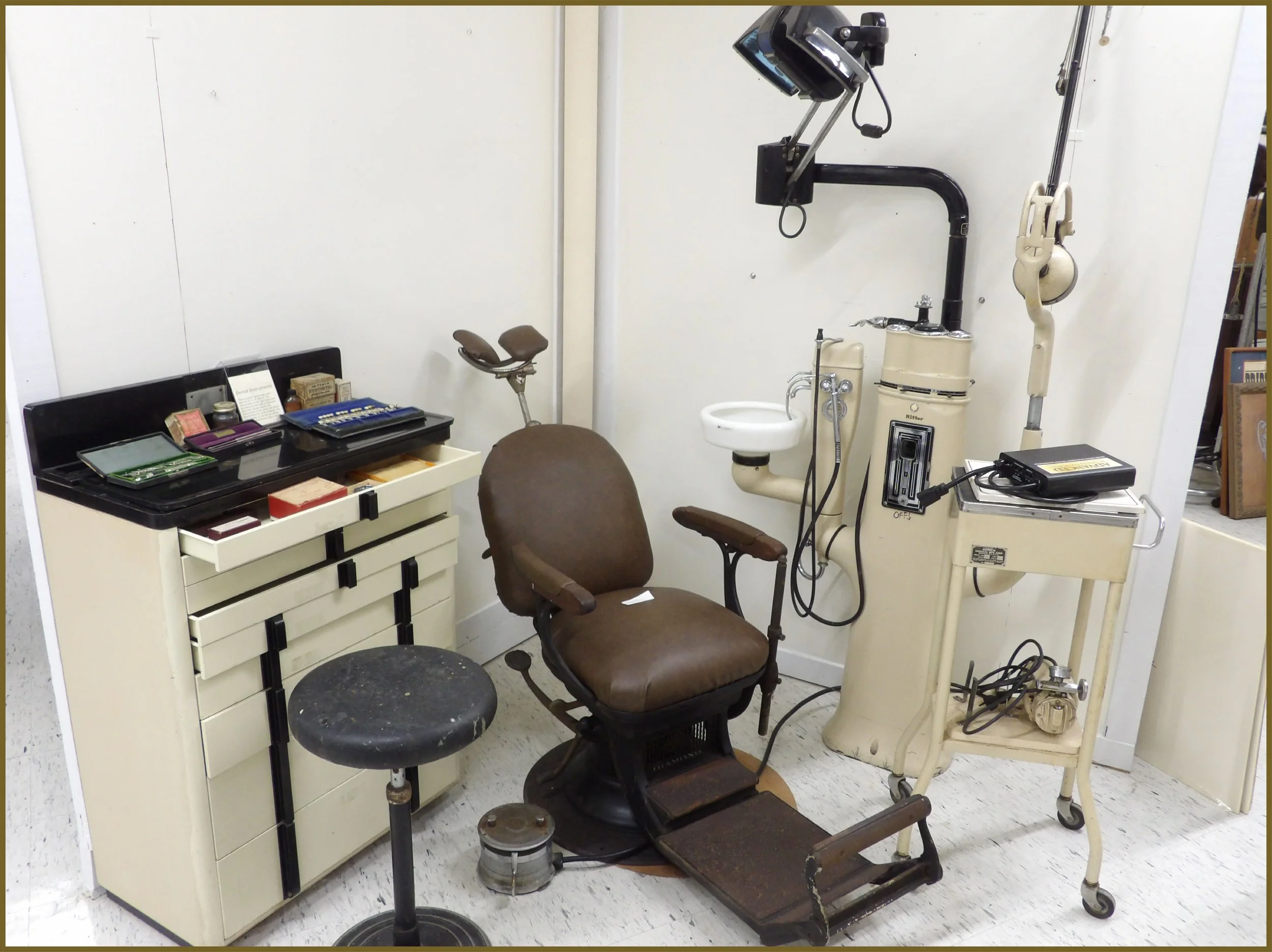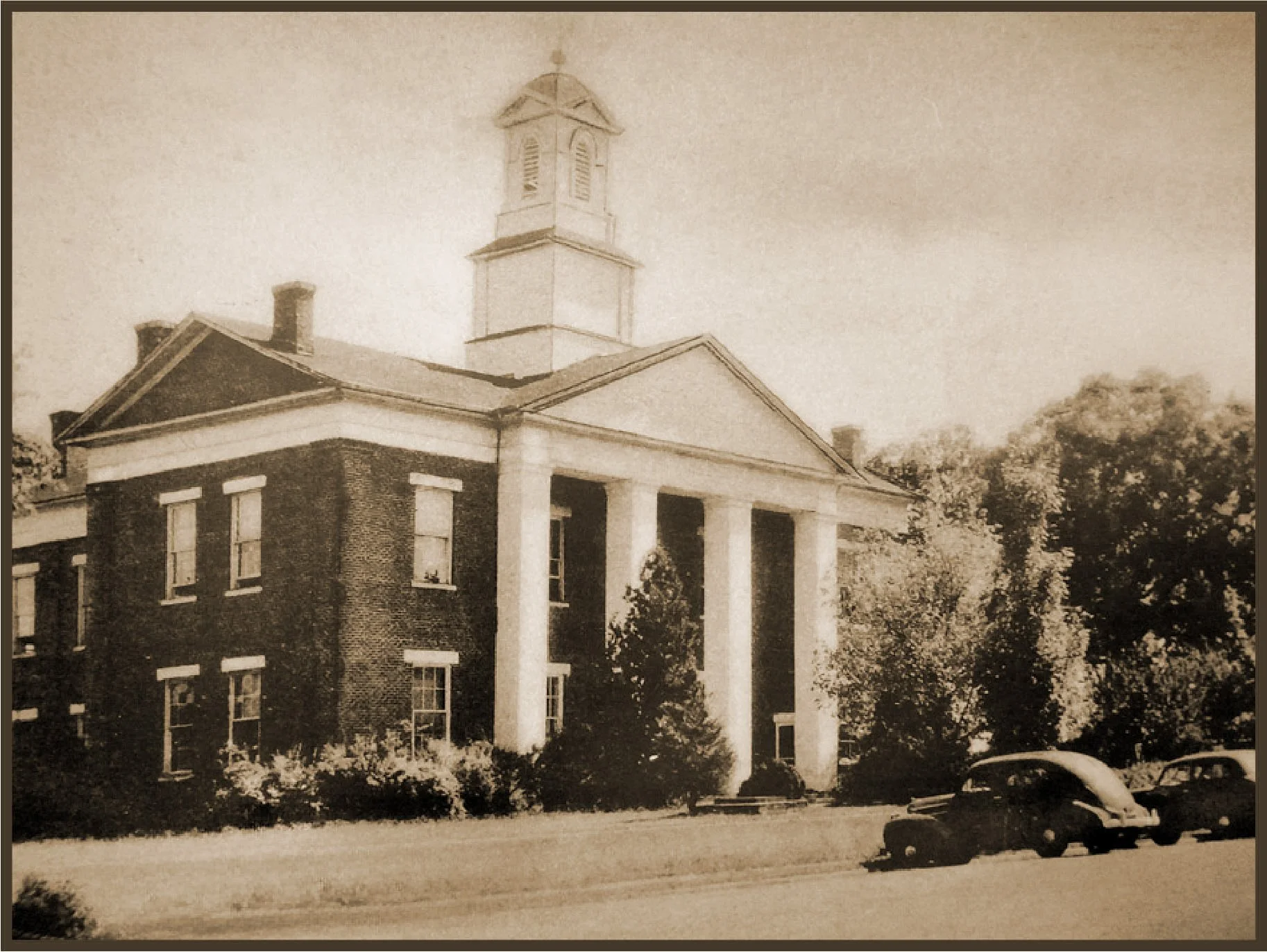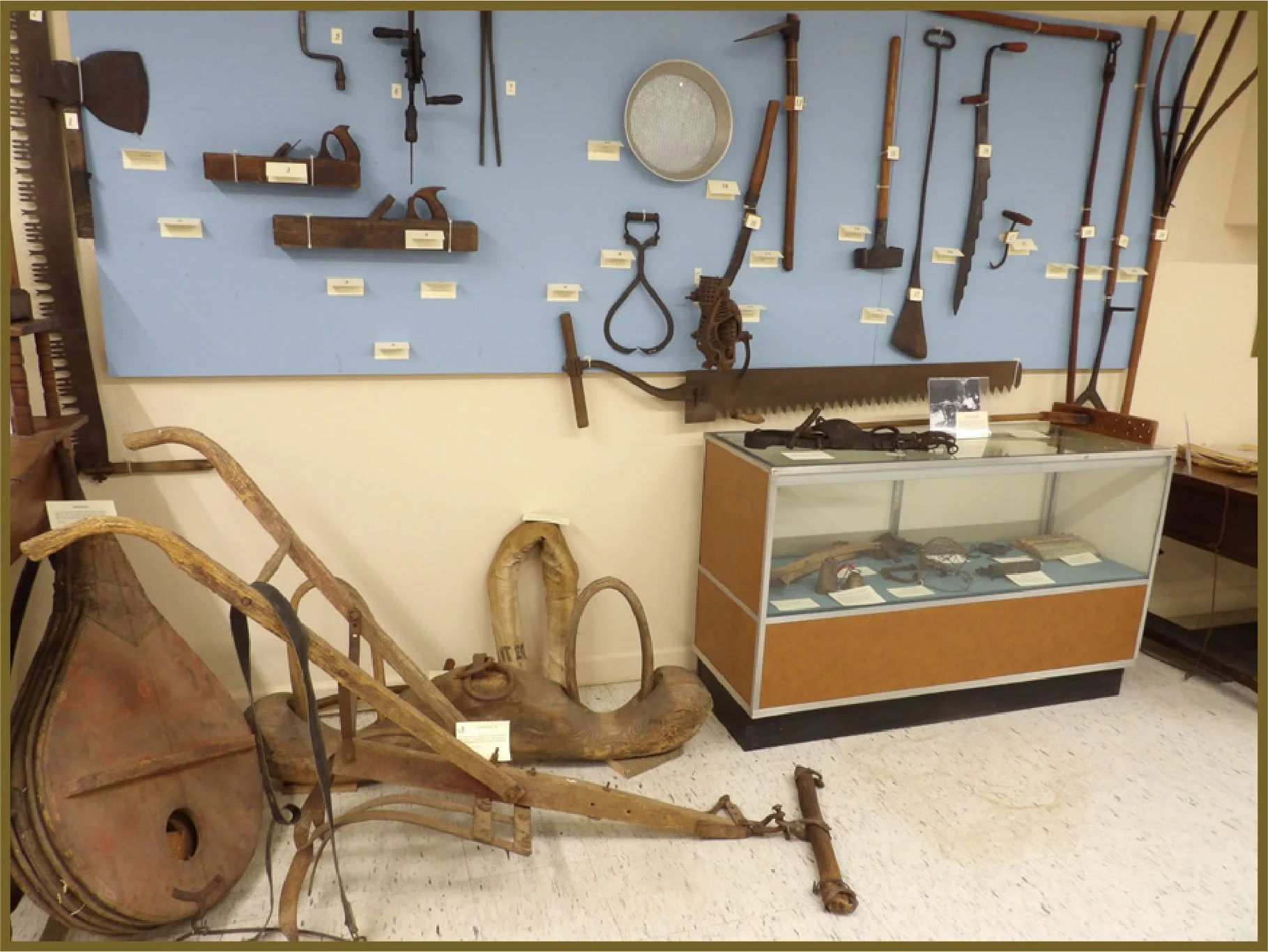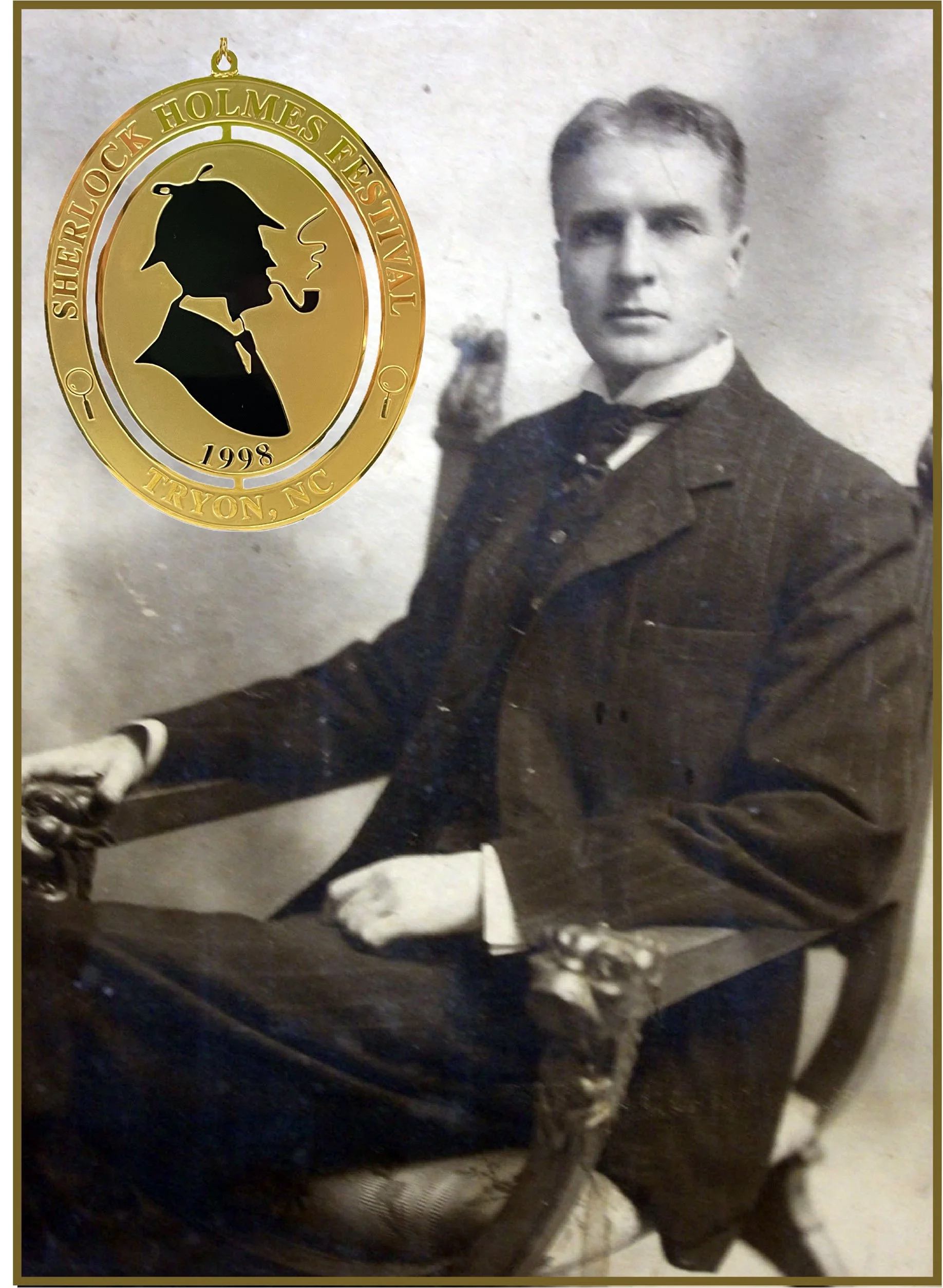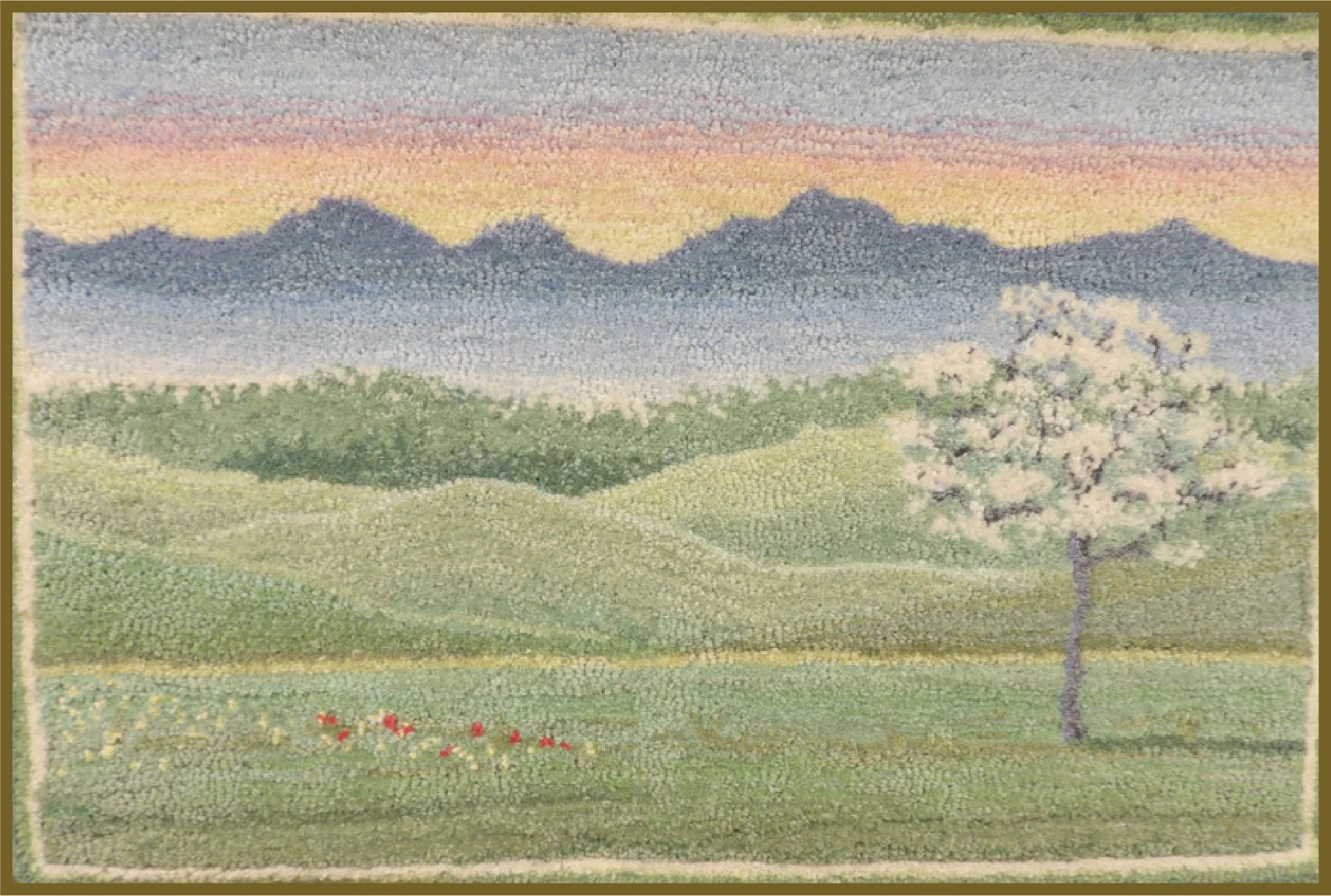The Artifacts
Help us raise funds for our move to our new location at 33 Gibson Street. Please Adopt an Artifact and support YOUR local heritage!
The minimum to adopt is $100.
You can adopt multiple items.
Multiple people can adopt the same item.
We are also pleased to accept donations in lesser amounts!
Your donation is tax-deductible
Contact Susan Speight at tel:8034296242
The Still
This museum’s distillery is real! This still was used to make moonshine long ago, locally, and because it’s the real thing, we had to get permission from the federal government just to display it. The federal government stated that, as long as it wasn’t fully assembled and wasn’t capable of otherwise distilling alcohol, we could display it without any fees or fines. This distillery was donated to the museum by the Hudson family.
Seth Vining’s Editors Desk
This desk is originally from New York, and was brought to Thousand Pines, located in Tryon, in 1926. Thousand Pines, the famous home of the famous actor, William Gillette, was converted into an inn, where this desk was used until 1976, when the inn finally closed. Seth Vining Sr. then used the desk as editor of the Tryon Daily Bulletin, the World’s Smallest Daily Newspaper, founded by Seth on Jan. 21, 1928.
Seth Sr. died in 1987 at the age of eighty-seven. Seth believed in public service and was at one time chair of the Polk Co. School Board, president and charter member of the Kiwanis Club, president of the Chamber of Commerce and a charter member of the Polk County History Museum. At this time of fundraising, it’s interesting to note that his obituary requests that memorials be made to the museum.
This desk is a gift of the Polk County Community Foundation.
Printing Press
In this museum, we have a very solidly built letterpress, manufactured by Chandler & Price, likely between the years 1888 and 1889. This company operated between 1881 and 1964. Throughout those years, the company created three main types of printing presses: the old style, new style, and craftsman. The old style’s flywheels had wavy spokes; the new style had plain spokes; the craftsman style had solid flywheels. The museum’s press is a new style press, and they were manufactured between 1911 and 1964. It can use an electric motor to operate, or by rotating the flywheels.
This particular letterpress was once operated by the Wood’s Press in Tryon and was used to print the Tryon Daily Bulletin from 1920s till 1982 Among the notable printer’s devils who have used this press, the names Hub Arledge and Garland Goodwin come up.
Park Drag Coach
This is park drag, a lighter, fancier coach that was most often used for sport and play. The originals, called park coaches, were used for cargo and transportation. Park drags or Tally Ho coaches, later alterations of park coaches, were used to carry food, passengers, and refreshments to leisurely excursions instead of heavy cargo.
This particular coach was owned by Colonel Frank and Mary Coxe of the Coxe Plantation. Named Maude, after their daughter, it dates back to the late 1800s, with a long history of recreational use. The Tryon Riding & Hunting Club donated this coach to the museum in 1982.
The Tryon Toymakers & Woodcarvers Exhibit
The Tryon Toymakers & Woodcarvers have a long and impressive history in the area, and even the country as a whole. The original founders, two ladies named Eleanor Vance and Charlotte Yale, created the non-profit business in a small cottage and hired and trained little boys and girls to craft toys, plaques, and other objects from wood. The children learned many things from the women, namely carving and crafting. But the children also learned other things, such as work ethics and manners.
The Tryon Toymakers & Woodcarvers were made nationally, and even internationally, famous because of their high-quality craftsmanship and detail. Every single thing they produced was hand-carved, hand-painted, hand-crafted. Among their notable toys were the little toy horses (which is Tryon’s mascot), Noah’s ark, and their other wooden animals.
Tryon Train Depot Exhibit
The train station in Tryon used to be a hub of activity and sight-seeing, as the steepest rail grade in America. This museum has a collection of artifacts from the Tryon Depot, as well as some artifacts from the Southern Railroad company, including a mail bag, some hand lanterns, an old lock, and some telegraph keys. Unlike typical keys you’d find on a keychain, the telegraph key is the device that creates and sends the beeping signal out. They’re also known as clackers, tappers, and Morse keys (not to be Morse code key). These telegraph keys were used by John Haney in Tryon and Spartanburg between 1944 and 1952.
Wall of Maps Exhibit
Maps from 1700s till 1950s Polk County and surrounding areas
When Ohio quarryman, Frank Stearns, discovered Polk County in the late 1800's, he had a stylized map created to advertise his White Oak Mountain development, Spring Mountain Park, the Coming Switzerland and Sanitorium of America. An original of the 1885 map was recently restored by the museum. Susan Speight, author of White Oak Mountain, NC has adopted the map.
The Square Grand Piano
This piano happens to be a grand piano. But it is square, and rather small, and quite short. J. & C. Fischer Company, of New York, started manufacturing pianos long ago, between the years of 1840 and 1982. This particular piano was manufactured around the time the company was first founded, making this piano over 180 years old! This piano was used in Green Creek High School from 1946 until its closing. This antique piano was donated to the museum by Jim Fagan.
The hymn book is an 1891 edition from the Methodist Episcopal Church. This was presented as a Christmas gift to Elias B. Edwards back in 1894. Eventually this book made its way to James Egerton, who graciously donated it to the museum.
Oak Hall Hotel Exhibit
.Originally named the Tryon City Hotel, this charming hotel was built in 1882 by Tryon’s first mayor, T. T. Ballenger and his father-in-law, John Garrison to house the many people stopping in Tryon at the railroad depot nearby. Central to life in Tryon, it stood on the bluff where the Oak Hall Condominiums are now.
The hotel had many owners including Delia Willaims in 1895 who changed the name to Oak Hall. Other owners included Eugene Brownlee, the Hesters, the Richards, Nelson Jackson, Mrs. McCloud and finally Clara Edwards and Dewey Cooksey, who purchased the hotel in 1948. Clara later bought Cooksey’s share of the hotel.
By all accounts, Clara was a delightful and efficient innkeeper. She never married and had been a teacher, worked at the post office for 20 years, and had traveled the entire United States, never meeting a stranger. Not only did visitors stay at Oak Hall, but the local community often came to dine. Favorite items on the menu were spoonbread, banana bread, roast beef, and fried chicken.
Many famous people stayed at the hotel including David Niven, Mrs. Calvin Coolidge, William Gillette, and Mrs. George Marshall. F. Scott Fitzgerald was in residence at Oak Hall for most of a winter and is said to have worked on “The Great Gatsby” while there.
By the 1970’s, Clara was in declining health. Despite her efforts to sell the hotel or cobtain a historical designation, the building was torn down in 1979. On exhibit are photos, china, and other items.
Dentist Exhibit
This dental display once belonged to Dr. Charles S. McCall, 1888-1963, a popular dentist in Forest City, NC for 50 years. Charles had four sons and he, “talked them all into becoming dentists, too.” One of his sons, Charles William McCall, opened a practice in Tryon moving several times from upstairs over Owen’s Drugs and finally to Pacolet Street. His sons, Mark, and Bill, following the family tradition, worked alongside their father for 20 years and both retired after 40 years of practice. After retirement, the brothers continued to support the community through the Boy Scouts, civic clubs, and establishing the Collins Dental Clinic. Mark and Bill were both inducted into the Second Wind Hall of Fame. Their father and grandfather would be proud.
Courthouse Exhibit
The Polk County courthouse is one of the few historic courthouses still in use today. It was built in 1857, two years after Polk County became official. During its renovation, several objects were discovered in and around the courthouse, including a handmade baseball bat and a random child’s shoe.
The courthouse shoe was enclosed in a wall, possibly during the courthouse’s construction, and likely for superstitious purpose. It was found in the wall under the right staircase. Back in the 1800s, it was not uncommon for people to place shoes somewhere in a new building to ward off evil spirits. The shoe, itself. would attract evil spirits, rather than the people inside the building, effectively keeping its occupants safe.
The museum has an old floor joint from its original construction. The floor joints were attached to each other by wooden protrusions. The floor joints, themselves, were carefully and accurately cut and pieced together, all without any nails, metal brackets, screws, etc. The courthouse exhibit was largely donated by the Courthouse Restoration Committee and John Vining.
Farm Tools Exhibit
Among our collection of farm tools, we have several interesting artifacts. For instance, the cowbell donated from Neb Conner was thought to have been cast in Switzerland in the late 1870s. It was brought back to the States after WWII. This was originally owned by Sarah McCurry Conner, who lived in the Midway area of Polk County.
The museum also has a large set of bellows, which was owned by Lewis Hipp of Saluda. This set is over 100 years old, dating back sometime before the 1900s. This was used on his farm in Ozone Dr., once known as Howard Gap Rd.
In our collection, we have two ice tongs. These ice tongs hanging on the wall were once used at the Home Ice Plant on Hwy 176 from 1920 up to the 1930s.
The Black Hawk sheller in the museum’s possession is well over one hundred years old. The inventor of this device, A. H. Patch, of Clarksville, Tennessee, came up with this design by sticking together wood shavings using beeswax at the age of 60. In the mid-1880s, the first shellers hit the shelves at $20-$25 each. The patent for the Black Hawk sheller was awarded later, in June of 1903. This tool won the First Industrial Award at the World’s Columbian Exposition in 1893, and later won the bronze medal at the St. Louis Exposition in 1904.
William Gillette
Tryon is famous for celebrities. Among these is William Gillett and his house, Thousand Pines.
William Gillette, a playwright and a director, made famous his portrayal of the super sleuth, Sherlock Holmes. Befriending Sir Arthur Conan Doyle, Gillette got permission to bring Doyle’s Holmes to life on stage and silent screen, writing and producing the play. He wrote, directed and produced several other plays, as well.
His home, Thousand Pines, later became a popular inn for several decades, and remains an historic building. The museum boasts many of Gillette’s personal items including the pipe and slippers he used in his final performance of Holmes.
Artwork
The painting of “The Garrison House at Pacolet Plantation,” was painted by Inman, SC artist, Leelon McLeod, for Bruce G. Ballenger of Charlotte, a descendant of Tryon’s first mayor, T.T. Ballenger, who lived at the plantation house. Built in the early 1800’s, the early structure was grand for its time, not brick since its owners were prominent landowners in connection with their lumber business. The original mantel is housed at Tryon Presbyterian Church and will be moved to the Polk County History Museum. Over the years, the house and land were passed from generations of the Braden, Williams, Garrison, and Ballenger families.
Painting shown is “Tryon in Autumn” by Robert Pearson Lawrence, 1883-1970, was born and raised in New York. He came to Tryon in 1952 which he called, “a painters paradise.” For 15 years, Lawrence was one of Tryon’s top professional artists and contributed to Tryon’s national artistic reputation by the quality of his landscapes. This and the Garrison Plantation are only two of more than 150 pieces of artwork at the museum.
Mosseller
The Mosseller family has been big in the rug business for many decades. They are very well-known for their craftsmanship, with their pieces shown all throughout the United States, including the Smithsonian, the White House, and other famous places. The Mossellers (Ron, Lillian, and their mother) originally hailed from New York, and later moved to Tryon, where they continued with their rug-making. Even as children, Ron and Lillian were familiar with the rug-making process and artistry. These children later became rug-makers themselves, each making a name for themselves. Among our exhibits, we have rug needles, sketches, and even small rugs made by the family.
Spinning Wheel
This spinning wheel was donated by Tryon Crafts, along with a loom and other artifacts of Tryon’s textile manufacturing. The spinning wheel revolutionized the production of yarn, which increased productivity elevating the economic and social standing of women.
For many years, North Carolina was a leading textile-making state, specializing in cotton. With a growing economy, textiles were big business in North Carolina for more than 150 years. In 1899, North Carolina had 177 textile mills with 30,273 workers and 1.1 million spindles.
Genealogy Research Library
The Polk County Genealogy Library has an extensive collection of census, cemetery, church, and land records that document the lives of many of the early Polk County families- an invaluable resource for researchers.
Stop Walnut Church Pump Organ
Do you recognize this organ? Probably from the Coxe Plantation black chapel, which was moved to Markham Road Tryon, now the Good Shepard Church. c. 1875
Stove and Kitchen Items
The museum has a number of antique kitchen items, from coffee grinders to stoves to pans. Our coffee grinder dates back to the civil war, making it an invaluable piece for the museum. Many of our other items in this collection date back to the early 1900s, such as this soup ladle, the butter molds, the pudding pan, the egg beaters, and even the stove. Each of these pieces were donated by various community members.



